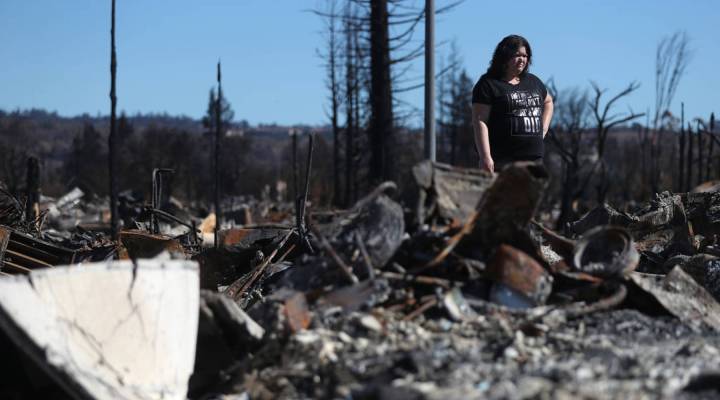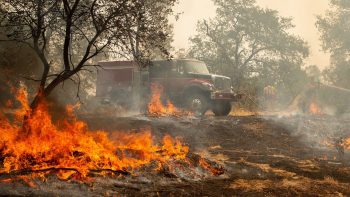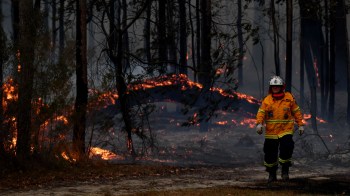
The $2 billion question: Spend on fighting fires or preventing them?
The $2 billion question: Spend on fighting fires or preventing them?

This year’s fires have been particularly devastating to communities across the U.S. According to the National Interagency Fire Center, nearly 9 million acres have burned this year, with fires currently burning in California, Arizona, Minnesota and Oregon. These fires will be some of the costliest in recent memory to fight as well. Marketplace host Adriene Hill talks with Philip Higuera, professor of fire ecology at the University of Montana, about whether those resources are being spent effectively and what we can expect in the future.
Adriene Hill: Can you describe the fire season you’ve had this year in Montana? It sounds like it’s been a pretty disastrous one.
Philip Higuera: Yeah, this summer in Montana, we had one of the most extensive years of burning, and I think when all is said and done, it’s ranking No. 3 in the last century or so. So after 1910, which was our record-setting fire year in the northern Rockies. So, a large fire year for sure. And I think it’s coming out to be one of the most expensive for Montana as well.
Hill: Do you have any sense nationally how much it costs to fight these big fires?
Higuera: The Forest Service alone this [fiscal] year has spent over $2 billion now just on firefights.
Hill: Just on firefighting?
Higuera: On average, so, like, over the last 10 years, the average is just over $1.4 billion in federal firefighting costs.
Hill: Is it worth the money? I mean, is that how we ought to be spending this money? Are there different, better ways to be spending the money when we’re talking about big fires?
Higuera: Yeah, that’s that’s the million-dollar question.
Hill: Or $2 billion question.
Higuera: I’m not going to say it is or isn’t worth it. There are a bunch of trade-offs underneath that with respect to how much money we put into suppressing fires once they occur versus considering investing some of that money into managing landscapes before fires occur.
Hill: Talk me through that, if you will.
Higuera: So particularly in the northern Rockies, this fire season has brought off a lot of talk about to what extent forest management and vegetation management in general can be used to prevent years like this. The point that I like to emphasize here, I think is important to know, is that vegetation management and forest management has an important role to play with how we live with wildfire, but it’s not going to be able to prevent years like 2017. These years that are largely driven by regional drought conditions. I think it’s safe to say that we can expect to see more years like this in the future.
Hill: And what’s the takeaway here? I mean, what would you like governments, urban planners, businesses even to be considering as they think about that future?
Higuera: I think when as a society, when we’re thinking about how to manage anything, in this case a natural phenomena, natural resources, we need to work to plan in a way that accounts for the inevitability of these large wildfires, but also help communities deal with wildfires when they do occur. And there are ways that we can, you know, increase the resilience of communities when fires occur and then not being surprised when these events happen and not pointing fingers at individual causes.
| Devastated Northern California marijuana farms are ineligible for insurance |
| Smoke from this season’s wildfires is worrying West Coast winemakers |
There’s a lot happening in the world. Through it all, Marketplace is here for you.
You rely on Marketplace to break down the world’s events and tell you how it affects you in a fact-based, approachable way. We rely on your financial support to keep making that possible.
Your donation today powers the independent journalism that you rely on. For just $5/month, you can help sustain Marketplace so we can keep reporting on the things that matter to you.


















